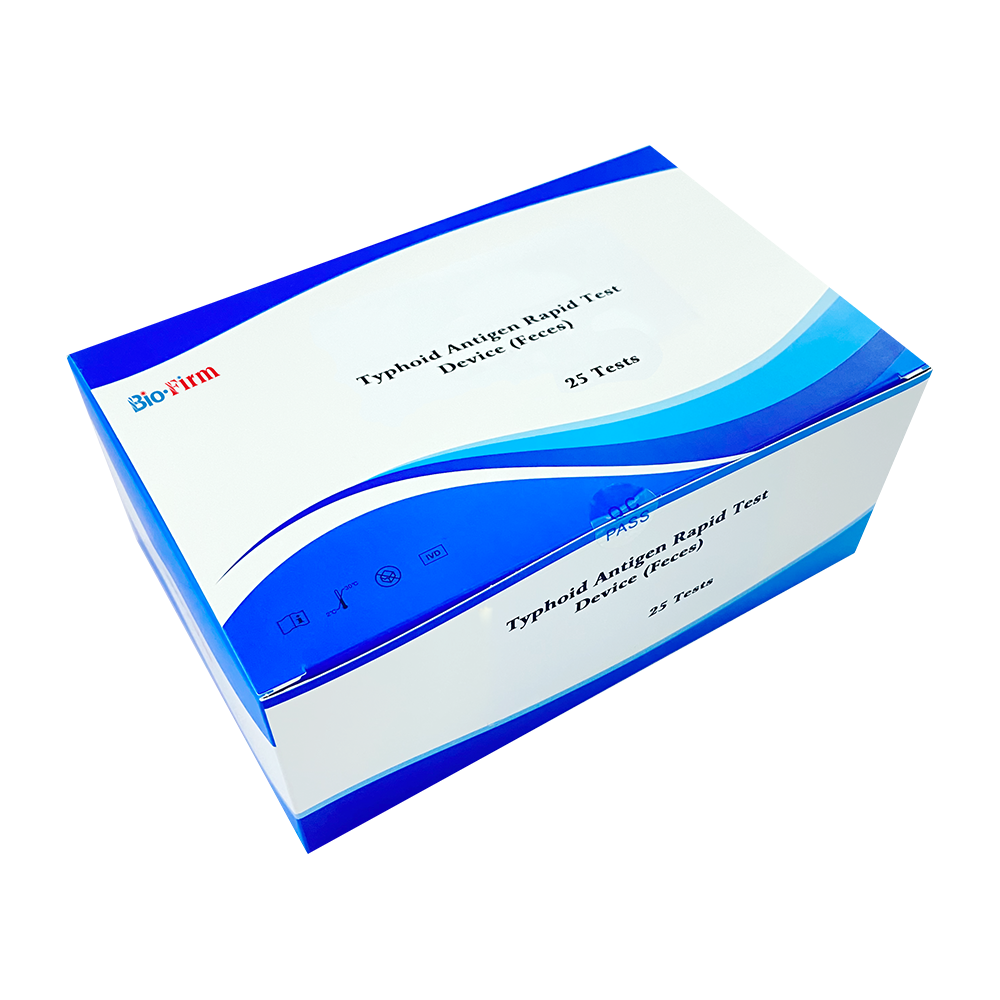Jul 01,2022
Typhoid fever remains a serious public health concern in many parts of the world, particularly in regions with inadequate sanitation and limited access to clean water. Caused by the bacterium Salmonella Typhi, this infectious disease spreads primarily through contaminated food and water and can lead to severe illness if not diagnosed and treated promptly.
In recent years, the development and distribution of typhoid rapid test kits have greatly improved early detection, especially in remote or low-resource settings. This article provides a clear overview of what typhoid fever is, its common symptoms, and how to correctly use a typhoid rapid test kit for fast and reliable results.
What Is Typhoid Fever?
Typhoid fever is a systemic bacterial infection that primarily affects the gastrointestinal tract and bloodstream. It is contracted through the ingestion of food or beverages contaminated with Salmonella Typhi. Once inside the body, the bacteria multiply and spread through the bloodstream, affecting various organs.
Common Symptoms:
High, prolonged fever
Weakness and fatigue
Headache
Abdominal pain
Constipation or diarrhea
Rose-colored spots on the abdomen or chest
Loss of appetite
If left untreated, typhoid fever can lead to life-threatening complications such as intestinal perforation or sepsis. Early diagnosis is crucial for initiating effective treatment with antibiotics and preventing transmission.
Why Early Diagnosis Matters
The symptoms of typhoid fever often resemble other febrile illnesses such as malaria or dengue fever. Misdiagnosis or delayed diagnosis can result in unnecessary suffering, inappropriate treatments, and increased risk of complications. Accurate, timely identification of the illness allows for proper medical intervention and reduces the risk of outbreaks.
This is where the typhoid rapid test kit becomes particularly valuable.
What Is a Typhoid Rapid Test Kit?
A typhoid rapid test kit is a diagnostic tool designed for quick detection of Salmonella Typhi-specific antigens or antibodies in a patient’s blood sample. These kits are especially useful in clinics, field hospitals, and regions where laboratory access is limited.
There are two main types:
Antibody-based tests – Detect the presence of IgM or IgG antibodies indicating current or past infection.
Antigen-based tests – Identify specific proteins from the bacteria itself for active infection.
These tests offer results within 15 to 30 minutes and are user-friendly, requiring only basic training.
How to Use a Typhoid Rapid Test Kit
While each manufacturer may provide slightly different instructions, most typhoid rapid test kits follow a standard procedure. Here is a general step-by-step guide:
1. Prepare the Materials
Open the test kit and check that all components are present:
Test cassette or strip
Dropper or pipette
Buffer solution
Sterile lancet (for finger-prick blood collection)
Alcohol swab
2. Collect the Blood Sample
Clean the fingertip with the alcohol swab. Use the lancet to prick the finger and collect the blood using the provided dropper. Usually, only 1–2 drops are needed.
3. Apply the Sample
Place the required amount of blood into the designated well on the test cassette or strip. Then add the buffer solution as instructed.
4. Wait for Results
Allow the test to process—typically for 15 to 20 minutes. Avoid interpreting results after the maximum time limit, as this may affect accuracy.
5. Read the Results
Positive: A visible test line appears alongside the control line.
Negative: Only the control line is visible.
Invalid: No lines appear, or only a test line appears—this means the test should be repeated with a new kit.
Limitations and Considerations
While typhoid rapid test kits are convenient and provide quick results, they are not 100% conclusive. False positives or negatives can occur due to:
Cross-reactivity with other infections
Early testing before antibodies are present
Poor storage or expired kits
Incorrect sample collection
Therefore, the test results should be interpreted alongside clinical symptoms and, if necessary, confirmed with laboratory culture or PCR tests. Follow-up with a healthcare provider is always recommended.

Typhoid fever is a preventable and treatable disease, but its similarity to other illnesses makes early and accurate detection critical. Typhoid rapid test kits offer a practical solution, especially in resource-limited settings, allowing healthcare workers and individuals to identify infections promptly.
Understanding how typhoid fever spreads, recognizing its symptoms, and using rapid test kits correctly can help curb the spread of infection and reduce the impact of outbreaks. If you suspect typhoid fever, seek medical attention and use a rapid test kit as a first-line diagnostic tool under proper guidance.



 Español
Español
 Français
Français
 Deutsch
Deutsch
 عربى
عربى








